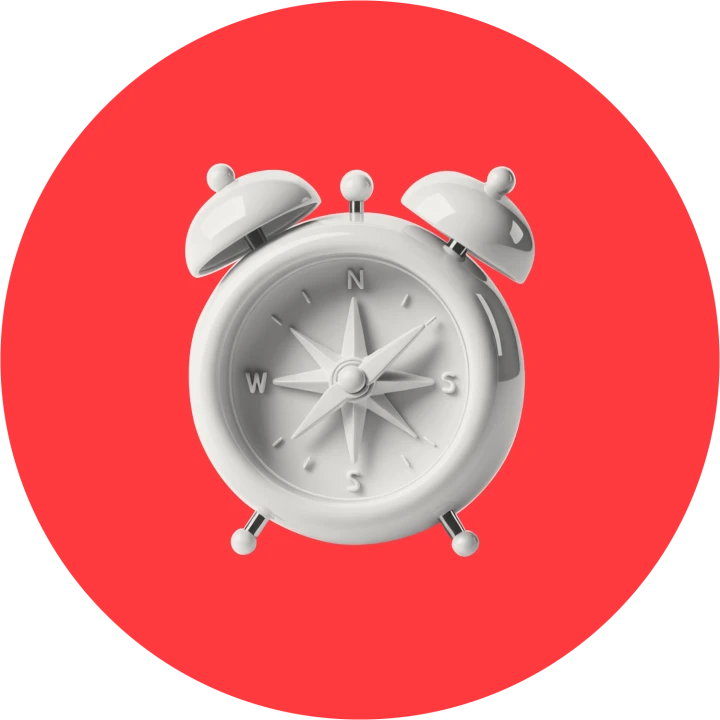Have you ever visited a website and left feeling frustrated because you couldn’t find what you were looking for? You’re not alone.
We've seen many companies design their websites more like puzzles, cluttered with irrelevant content that hides the very stories they’re trying to share. This doesn’t just frustrate visitors; it also leads to low traffic, fewer clicks and, eventually, the costly need to redesign the website.
Many times, we forget that a website is built for our audience, not for ourselves. It is designed to help them understand what we do and how we can solve their problems. Take, for example, an online bookstore that uses AI to help customers find their next favorite book based on past purchases. Or consider a service provider that offers users an interactive tool to explore plans and pricing before they commit. Such functionalities not only simplify the decision-making process but also enhance engagement, paving the way for a deeper connection with the brand.
When built with a user-centric approach, a website becomes an invaluable branding asset. In a crowded digital landscape, a more targeted, relevant and user-friendly experience helps differentiate your brand and boosts awareness. It also steers visitors toward desired actions like service sign-ups and purchases. What’s more, it nurtures brand loyalty. When visitors recognize that a website speaks their language and caters to their needs, it builds trust. Over time, this trust can evolve into brand loyalty, encouraging them to revisit your site and recommend it to others.
Bridging from this understanding, our experience with clients has led us to identify several crucial steps in constructing a user-centric site—one that does more than just enhance your website; it solidifies your brand strength and presence in the market.
1. Understand your goals
Before taking any action, you should always set clear goals to guide all other aspects of website development. Consider a scenario where an edtech company aims to increase online sales by 30% within the next year. This overarching goal influences various aspects of website development, from the design of compelling services pages to the implementation of seamless checkout processes. Without this clear objective in mind, the website risks becoming a disjointed collection of features rather than a strategic tool driving business growth.
Think through the primary purpose of your website: Is it to sell products, provide information, offer services or something else? Define the key information you want visitors to grasp within the first 10 seconds of landing on your site. Additionally, outline the specific actions you want them to take while navigating your site and the overall impression or feeling you intend for them to leave with. By thinking through these questions from the beginning, you can more easily assess and ensure that every facet of the website—from content to layout—is designed to support your business objectives.
2. Understand your audience
Knowing who we are targeting and what they want to see is advantageous, yet we don't always have straightforward answers.
Consider an established website—analytics can be our best ally here. Leveraging tools like Google Analytics can reveal not only who visits your site but also how they engage with your content. For instance, in our work with a law firm, the data indicated that while the lawyer profiles were the most visited pages, they also had higher bounce rates. This insight led us to refine these profiles, making them more accessible and engaging.
Direct engagement with your audience through surveys and interviews can provide insights into their preferences and behaviors—insights that cold data can't always provide. If direct interaction isn’t feasible, a competitive analysis can reveal the audience’s expectations within your industry. It’s these informed insights that enable us to build a website that resonates with visitors.
3. Bring it all together
With a solid grasp of your goals and a deep understanding of what your audience is looking for, it's time to integrate these elements into your website. In fact, a website browsing experience is very similar to shopping in a physical store, where visitors navigate through virtual aisles, interact with content and make decisions. In building websites, I often draw inspiration from Trader Joe’s—our strategy team’s favorite grocery store. This store is more than a place to buy food; it’s an experience, carefully designed with the customer in mind.
Clear and simple navigation:
When you walk into a Trader Joe's store, its prominent signs point you directly to the items you want—this should be the aim for your website's navigation. Your menus, like those bold labels in the store, should be crystal clear and direct people exactly where they want to go, no matter how much of a hurry they’re in.
High-quality, related content:
Have you noticed how Trader Joe’s groups the ingredients for a Caprese salad or a peanut butter and jelly sandwich? It's like they're reading your mind. Your website should emulate this, presenting related services or products together, so users don’t have to hunt. Craft content to anticipate and meet user needs, driving them to spend more time on your site.
Clear call to action:
Take a page from the store’s playbook with those vibrant, artist-designed price tags that can’t be missed. Your website's call to action should pop, with bold fonts and colors that grab attention, encouraging users to click, read and connect. It's all about making the next steps obvious and irresistible.
Consistent design
Every Trader Joe’s store offers a sense of familiarity, no matter the location. Similarly, your website should provide a consistent experience, page to page, click to click. Consistency is not just comforting; it’s professional, and it tells your users they’re in good hands.
Additional factors:
The digital realm differs from the physical one. Balancing mobile responsiveness, loading speed, intuitive search functions and SEO-friendly design is essential—and the list goes on. It’s this behind-the-scenes work that makes a website not just good, but great. Attention to these details ensures that users enjoy an exceptional experience anytime, anywhere.
Just like that feeling of walking into a well-organized store where everything is where you expect it to be, a great website should welcome your users with clarity and purpose. It’s more than just aesthetics; it’s about creating a digital space that reflects your brand’s commitment to its audience. By prioritizing a user-centric approach, your website can go beyond a portal into an authentic extension of your brand identity. If you’re ready to bring this experience to life, let’s have a conversation and see where it can take us.





